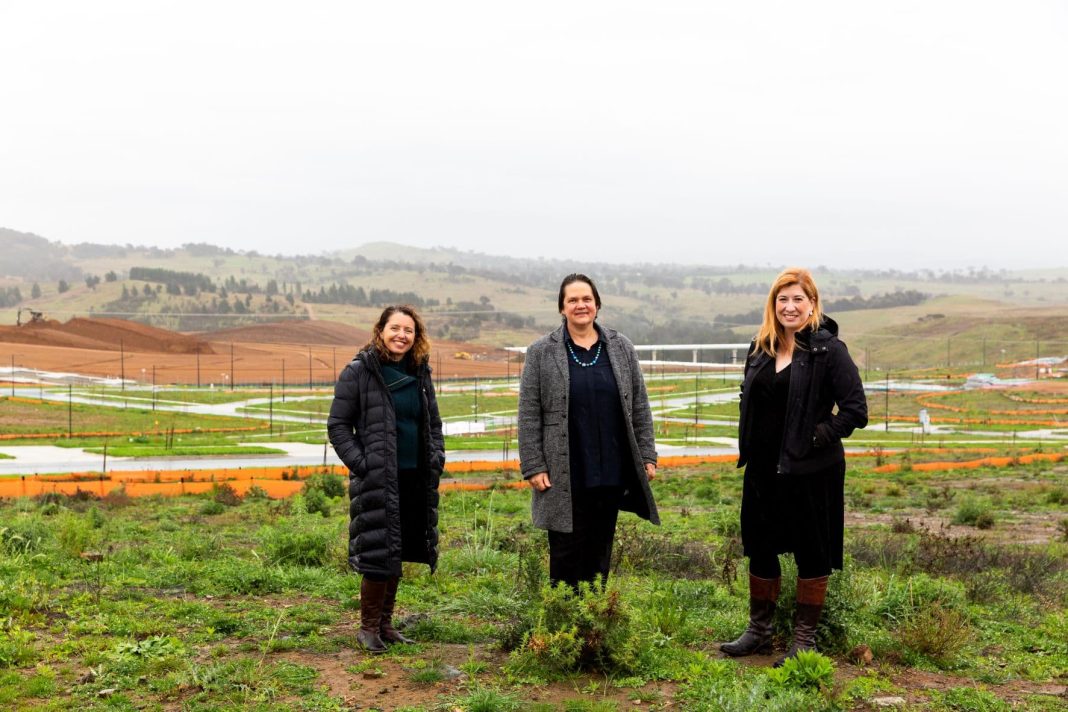Strengthened environment protection guidelines from the Environmental Protection Authority (EPA) for ACT construction and land development will now see a risk-based framework for erosion and sediment control – and a hefty fine for non-compliance.
The preventive approach aims to minimise pollutants entering waterways around development and construction sites and provide developers with the information and guidance to ensure any environmental risks are mitigated.
For developers, builders, and civil construction sites that fail to meet the EPA’s new guidelines, the staged penalty approach will begin with education, increasing to a warning letter, on-the-spot fines for breaching environmental protection orders, and significant penalties for causing material or serious environmental harm.
Minister for Business and Better Regulation Tara Cheyne says the fines are $1,600 for an individual, $8,100 for a corporation, and a court-imposed penalty can be up to $81,000.
Ms Cheyne says the guidelines have been created in partnership with stakeholders and peak bodies, and doesn’t believe there has been any resistance.
Under the EPA guidelines, all builders, developers, and civil construction have an environmental duty to prevent harm or nuisance, she says.
“I don’t think any builder or developer wants to be slapped with a fine,” the minister says.
“They also know that has flow-on consequences for how the general public is perceiving them as well, particularly in a place like Canberra where we do have a very engaged public on wanting positive environmental outcomes, so this is something where we’re all working together…”
Builders and developers will now need to present detailed control plans to the EPA on how they plan to regulate their sites, including minimising exposed soil, seeding grass as soon as the road shaping is complete, and expanding pond sizes on site.
A “really good example” of the new guidelines is displayed at a development site in Whitlam which has begun purposefully landscaping its site to direct water runoff from rainfall into a designated area, Ms Cheyne says.
Minister for the Environment Rebecca Vassarotti says with more weather events and an increase in development activity, the new framework means the ACT won’t be dealing with the aftermath of the environmental damage.
“We know that erosion and sediment control is a key risk involved in land development and construction work here in the ACT. The guidelines include updated sediment basin requirements to address the increased frequency and intensity of rainfall events associated with climate change,” Ms Vassarotti says.
“Other environmental issues identified within the updated guidelines include noise and air emissions, waste management, land contamination, biodiversity, and climate change.
“I encourage every member of the building and construction industry to familiarise themselves with the new updates included within the guidelines. With renewed focus and direction, we can reduce the environmental risks associated with important development work in our community.”
EPA collaborated with peak bodies on guidelines
Senior director of the EPA, Su Wild-River, says the consultation period with key stakeholders was “extensive” and the EPA sought feedback from all peak bodies and major developers to improve the guidelines.
“We continue to talk with developers. The EPA has officers out on site every single day looking at these sites and analysing where things might be failing or look like they might fail and working with developers to improve those in real time,” says Ms Wild-River.
She says there are no added costs in the strengthened guidelines because “good management up front prevents additional costs downstream” and Canberrans expect a pristine environment, so with this additional management, that can only improve.
MBA welcomes strengthening of guidelines
Master Builders ACT (MBA) CEO Michael Hopkins says the MBA welcome the release of the strengthened guidelines to support developers and builders’ environmental obligations.
“We encourage our members and the broader construction industry to review the guidelines and to seek further advice from the EPA if they need assistance implementing the guidelines on building sites,” he says.
“It is important that all stakeholders, including developers, designers and contractors, understand their legal obligations to manage the impacts on the environment when carrying out new land development and construction activities.”
Get all the latest Canberra news, sport, entertainment, lifestyle, competitions and more delivered straight to your inbox with the Canberra Daily Daily Newsletter. Sign up here.



